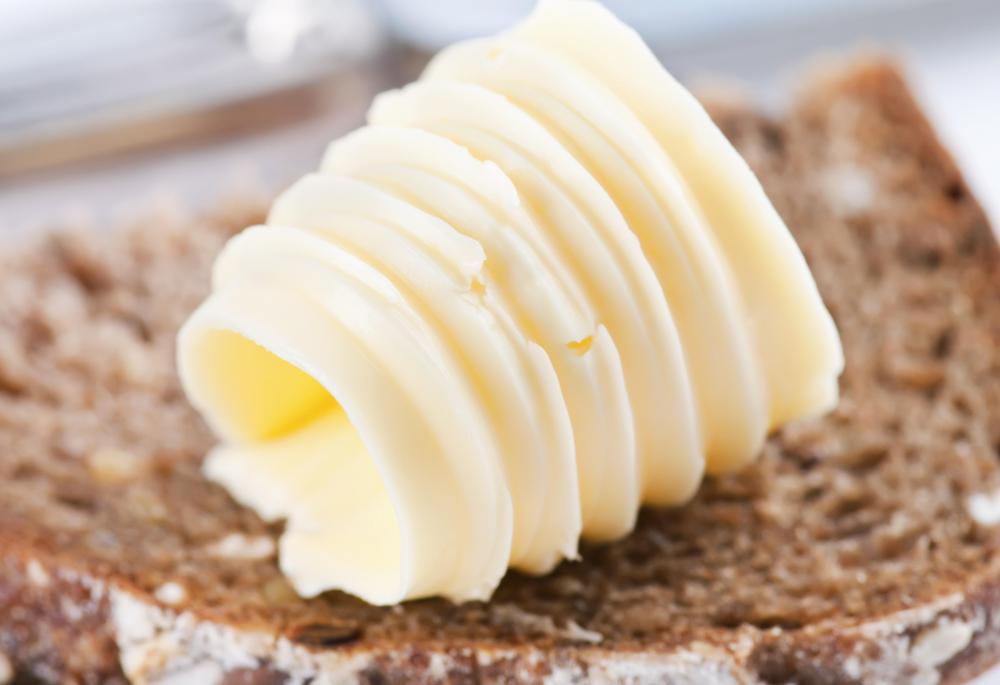At DelightedCooking, we're committed to delivering accurate, trustworthy information. Our expert-authored content is rigorously fact-checked and sourced from credible authorities. Discover how we uphold the highest standards in providing you with reliable knowledge.
What is Diacetyl?
Diacetyl, or 2,3 butanedione, is a naturally occurring chemical that is produced as a byproduct of yeast during the fermentation process. It is naturally found in different oils, butter, wine, beer, vinegar and coffee. It gives butter its buttery taste, lends a creaminess to certain foods, and gives wine and beer a discernible “slipperiness,” known to certain brands or types.
Diacetyl is used in a wide variety of food products. It is best known as a flavoring in buttered popcorn, particularly, microwave buttered popcorn. It is also used to both flavor and affect the creaminess of some dairy products including sour cream and cottage cheese, as well as salad dressings, marinade, syrup, icing, baked goods and cheese that is processed.

Although it naturally occurs when brewing beer, too much diacetyl is an undesired byproduct of the fermentation process. Diacetyl rest is a technique of allowing the yeast in the beer to absorb the excess diacetyl by gradually raising the temperature over several days. Though the slipperiness diacetyl gives to beer is typically an undesired trait, some makers of Chardonnay wine in California promote their “Butter Bombs” wine which is an acquired taste.

Most recently, diacetyl has earned a bad name for being the probable cause of several popcorn factory workers developing what has been dubbed “popcorn lung,” or bronchiolitis obliterans, a rare and serious fixed obstruction lung disease. Although it has not been conclusively determined to be the cause of this disease, it has been closely tied to several cases. Despite the fact that is has been approved by the Food and Drug Administration (FDA) as a safe food flavoring, diacetyl is being replaced by several manufacturers to protect food workers and consumers. The National Institute of Occupational Safety and Health (NIOSH) has recommended that factories using diacetyl flavoring implement safety precautions which reduce the amount of contact workers have with it.

Lawmakers in California have introduced bills in 2007 which completely ban the use of diacetyl by 2010. In response to public concern, studies showing the adverse effects of diacetyl in factory workers and pricey lawsuits, use of diacetyl as a food additive is quickly becoming a thing of the past.
AS FEATURED ON:
AS FEATURED ON:














Discussion Comments
Yeah, diacetyl is dangerous. With studies that are linking it as a possible trigger for Alzheimer's disease, this supposedly "safe" additive is anything but.
Post your comments